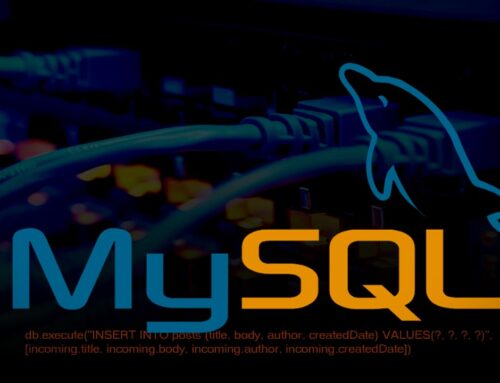In the rapidly evolving world of work, we are frequently faced with a mounting pile of tasks and diminishing amounts of time. Work pressures and impending deadlines can seem insurmountable, leading to stress and burnout. Under such circumstances, mastering the art of prioritizing work becomes not just a skill, but a critical survival strategy.
This comprehensive guide will provide you with an in-depth understanding of how to efficiently prioritize your workload under high-pressure situations. Prioritization is more than just deciding what to do first. It involves an intricate process of analyzing tasks, assessing their importance and urgency, planning, and organizing them in a manner that enhances productivity, improves performance, and reduces stress.
From this article, you’ll grasp the following:
- An understanding of the essence of work prioritization and its benefits.
- The psychology behind decision making under pressure.
- Tools and methodologies for effective prioritization.
- The role of delegation and saying ‘No’ in effective work prioritization.
- Strategies to maintain your prioritization system under continuous work pressure.
Equipped with this knowledge, you will have the power to transform the way you work, enabling you to manage your tasks effectively, even under the most pressing circumstances. This, in turn, will contribute to improved work-life balance, increased productivity, and overall job satisfaction.
Table of Contents
- The Essence of Work Prioritization
- Psychology of Decision Making Under Pressure
- Tools and Methodologies for Prioritization
- The Power of Delegation and Saying ‘No’
- Maintaining Your Prioritization System Under Pressure
- Wrapping Up
- Sources
The Essence of Work Prioritization
Work prioritization is the process of arranging tasks or activities in order of their importance and urgency. It is a crucial aspect of time management, enabling individuals and teams to focus on the tasks that matter most. In essence, work prioritization is about making choices. When you prioritize, you decide which tasks should be done immediately, which ones can wait, and which ones may not need to be done at all. Let’s take a closer look at The Benefits of Work Prioritization.
Improved Productivity
One of the primary benefits of work prioritization is enhanced productivity. When tasks are ranked in order of their importance and urgency, it allows individuals and teams to focus their efforts on the tasks that contribute the most value. This often results in completing more work in less time, leading to increased productivity.
Reduced Stress
A massive pile of tasks can often lead to feelings of overwhelm and stress. However, by prioritizing work, you can break down your workload into manageable chunks. Knowing exactly what needs to be done and when it needs to be done helps reduce uncertainty, leading to less stress and anxiety.
Better Time Management
Prioritization plays a critical role in effective time management. It allows you to allocate your time based on the importance and urgency of tasks. By doing so, you can avoid spending too much time on less important tasks, ensuring that critical tasks are completed on time.
Enhanced Decision-Making
Prioritization involves evaluating tasks based on various factors, including their importance, urgency, and potential impact. This process can enhance decision-making skills, as it requires critical thinking and analysis.
The Importance of Work Prioritization Under Pressure
Prioritizing work is especially crucial in high-pressure situations. When deadlines are looming, and the stakes are high, the ability to identify and focus on the most critical tasks can mean the difference between success and failure.
By effectively prioritizing tasks, you can ensure that essential work is completed first, reducing the risk of missed deadlines. Furthermore, prioritization can help mitigate the impact of stress and pressure, as you’ll have a clear plan of action, enabling you to navigate through the chaos with a sense of control and direction.
In the next sections, we will explore the psychology of decision making under pressure, delve into various tools and methodologies for effective prioritization, and discuss how to maintain your prioritization system under continuous work pressure. Each of these aspects is critical in mastering work prioritization under pressure, setting you on the path towards improved productivity, reduced stress, and better work-life balance.
Psychology of Decision Making Under Pressure
Making decisions under pressure is often a challenge. Pressure can cloud our judgment, impair our ability to think clearly, and lead us to make hasty decisions. Understanding the psychology behind decision making under pressure can provide valuable insights that can help you better prioritize your work under demanding situations.
Impact of Pressure on Decision Making
Pressure can significantly influence the way we make decisions. Research suggests that when under pressure, individuals tend to make decisions faster but with less accuracy. This tendency can lead to poor prioritization, as tasks might not be adequately evaluated based on their importance and urgency.
Furthermore, high-pressure situations can trigger a stress response, causing a shift from reflective (slow and thoughtful) to reflexive (fast and instinctive) decision making. While reflexive decision making can be beneficial in immediate, life-threatening situations, it’s usually not the best approach when it comes to work prioritization, where careful thought and consideration are required. Now let’s have a look Strategies to Improve Decision Making Under Pressure.
Mindfulness and Stress Management Techniques
Mindfulness and stress management techniques can help mitigate the impact of pressure on decision making. Techniques such as deep breathing, meditation, and mindfulness can help calm the mind, improve focus, and enhance decision-making ability under pressure.
Cognitive Reappraisal
Cognitive reappraisal, a type of emotion regulation strategy, involves changing the way we think about a potentially stressful situation. Instead of viewing a high-pressure situation as threatening, viewing it as a challenge or an opportunity can lead to better decision-making outcomes.
Prioritization Tools and Methodologies
Using prioritization tools and methodologies can provide a structured approach to decision making, reducing the impact of pressure. Tools such as the Eisenhower Matrix, the ABCDE Method, or the Ivy Lee Method can help in making more objective decisions about task prioritization.
Practice and Preparation
Like any other skill, decision making under pressure can be improved with practice and preparation. Regularly practicing making decisions under simulated pressure can help improve your ability to prioritize effectively when real-life high-pressure situations arise.
Understanding the psychology behind decision making under pressure is a crucial step in mastering work prioritization. With this knowledge, you can develop strategies to better manage pressure and make more effective decisions, enabling you to prioritize your work more efficiently, even under the most demanding circumstances.
Tools and Methodologies for Prioritization
Effective work prioritization requires more than instinct or gut feeling. It necessitates the use of proven methodologies and tools that facilitate objective decision making. Here, we’ll explore some popular prioritization techniques that can help manage workload under pressure.
Eisenhower Matrix
Named after the 34th President of the United States, Dwight D. Eisenhower, this tool helps categorize tasks based on their importance and urgency. The matrix is divided into four quadrants:
- Urgent and important (Do): These tasks should be done immediately.
- Important but not urgent (Decide): Schedule these tasks for later.
- Urgent but not important (Delegate): Consider delegating these tasks, if possible.
- Neither urgent nor important (Delete): These tasks can be eliminated.
By using the Eisenhower Matrix, you can objectively assess the urgency and importance of each task, making the prioritization process more effective.
ABCDE Method
The ABCDE method is another useful tool for prioritizing tasks. It involves assigning a letter (A, B, C, D, or E) to each task based on its importance.
- A tasks are most important – often tasks with significant consequences if not completed.
- B tasks are tasks you should do, but they are not as critical as ‘A’ tasks.
- C tasks are tasks you would like to complete but have no serious impact if left undone.
- D tasks are tasks that can be delegated to someone else.
- E tasks are tasks that can be eliminated without any significant consequences.
Ivy Lee Method
The Ivy Lee method is a simple yet powerful technique for prioritizing tasks. The process involves the following steps:
- At the end of each workday, write down six most important tasks you need to accomplish the next day. Do not write more than six tasks.
- Prioritize these six tasks in order of their true importance.
- When you start your day, focus on the first task. Work until it’s completed before moving on to the next task.
- Approach the rest of your tasks in the same way. At the end of the day, move any unfinished tasks to a new list of six tasks for the following day.
Kanban Board
A Kanban board is a visual tool that enables you to oversee the progress of tasks. Tasks are placed on the board and moved through columns labeled “To Do,” “In Progress,” and “Done,” offering a clear view of task status, workload, and workflow efficiency.
Technology and Prioritization Tools
Modern technology offers several digital tools for task prioritization, such as project management platforms like Asana, Trello, or Jira. These tools have built-in features for task assignment, setting deadlines, monitoring progress, and prioritizing tasks, making them excellent choices for managing complex tasks or team projects.
By leveraging these tools and methodologies, you can systematically prioritize your tasks, facilitating better decision making, enhancing productivity, and reducing the stress that often accompanies high-pressure work situations.
The Power of Delegation and Saying ‘No’
Effective work prioritization is not only about determining the order of tasks; it also involves deciding who should be responsible for them and whether they should be pursued at all. Two strategies that can significantly enhance your prioritization efforts are delegation and the ability to say ‘no’.
Delegation
Delegation is the process of assigning tasks or responsibilities to other individuals, typically subordinates or team members. In a high-pressure environment, effective delegation can serve as a powerful tool for work prioritization. Here’s why:
Increases Efficiency and Productivity
Delegation allows tasks to be divided among team members, which can significantly increase efficiency and productivity. It ensures that tasks are handled by individuals who have the appropriate skills and capacities, which can lead to higher quality outcomes.
Promotes Skill Development and Team Building
Delegating tasks can also promote skill development among team members, providing them with opportunities to learn and grow. Additionally, it can foster a sense of trust and collaboration within the team, contributing to stronger team dynamics.
Reduces Workload and Stress
By delegating tasks, you can manage your workload more effectively, reducing stress and preventing burnout. It ensures that you can focus on high-priority tasks that require your specific expertise.
However, effective delegation requires clear communication, trust, and follow-up. It’s crucial to ensure that the person you’re delegating to understands the task, has the necessary resources to complete it, and feels comfortable asking for clarification or help.
Saying ‘No’
While it may seem counterintuitive, the ability to say ‘no’ is a crucial skill in work prioritization. There will always be more tasks than you have the capacity to handle, especially in high-pressure situations. Learning to say ‘no’ to additional tasks, unnecessary meetings, or interruptions can help maintain your focus on high-priority tasks.
However, saying ‘no’ is often easier said than done. Here are a few strategies to help you navigate these situations:
Evaluate Before You Commit
Before agreeing to a new task, take the time to evaluate its importance and urgency. Consider how it aligns with your current priorities and whether you have the capacity to take it on.
Be Clear and Assertive
When saying ‘no’, it’s important to be clear, assertive, and respectful. Explain your reasons succinctly and factually. Remember, saying ‘no’ is about setting boundaries to protect your time and energy.
Offer Alternatives
If possible, offer an alternative when saying ‘no’. This might involve suggesting a different timeframe, recommending someone else for the task, or proposing a different solution.
By mastering the art of delegation and learning to say ‘no’, you can take greater control over your workload, improve your prioritization skills, and navigate high-pressure situations with greater ease.
Maintaining Your Prioritization System Under Pressure
Creating a prioritization system is only half the battle. The true test lies in maintaining and adhering to your prioritization system even when faced with pressure. Here’s how you can make your prioritization system more resilient and effective under pressure:
Regularly Revisit and Revise Your Priorities
One of the keys to maintaining a prioritization system under pressure is to regularly revisit and revise your priorities. The importance and urgency of tasks can change over time, particularly in dynamic and fast-paced work environments. Regularly reviewing your priorities ensures your system remains relevant and effective.
Apply Stress Management Techniques
The effectiveness of your prioritization system can be influenced by your ability to manage stress. Techniques such as deep breathing, mindfulness, and regular exercise can help mitigate the impact of pressure, helping you maintain clarity and focus.
Be Flexible and Adaptable
Flexibility and adaptability are crucial when maintaining a prioritization system under pressure. Unexpected issues or changes in circumstances can disrupt your plans. Being able to adapt your priorities in response to these changes can ensure your system remains effective.
Use Appropriate Tools and Techniques
Using the appropriate tools and techniques can make maintaining your prioritization system easier, particularly under pressure. Digital tools, such as task management platforms, can streamline the prioritization process, automate reminders, and facilitate task tracking.
Involve Your Team
If you work as part of a team, involving your team members in the prioritization process can be beneficial. It can lead to better decision-making, foster a shared understanding of priorities, and improve collaboration.
Practice Regular Reflection
Regular reflection is a powerful tool for maintaining your prioritization system. By reflecting on your prioritization decisions and their outcomes, you can gain valuable insights, identify areas for improvement, and make informed adjustments to your system.
By implementing these strategies, you can maintain and enhance your prioritization system even under high-pressure situations, leading to increased productivity, reduced stress, and improved work-life balance.
Wrapping Up
Mastering work prioritization under pressure can be challenging, but with the right strategies, tools, and mindset, it is certainly attainable. The most important takeaway from this guide is the understanding that effective work prioritization is a dynamic process that requires regular assessment, flexibility, and willingness to adapt to changing circumstances. Remember, a well-structured prioritization system not only helps in efficiently managing tasks under pressure but also contributes to increased productivity, better work-life balance, and improved job satisfaction.











Leave A Comment